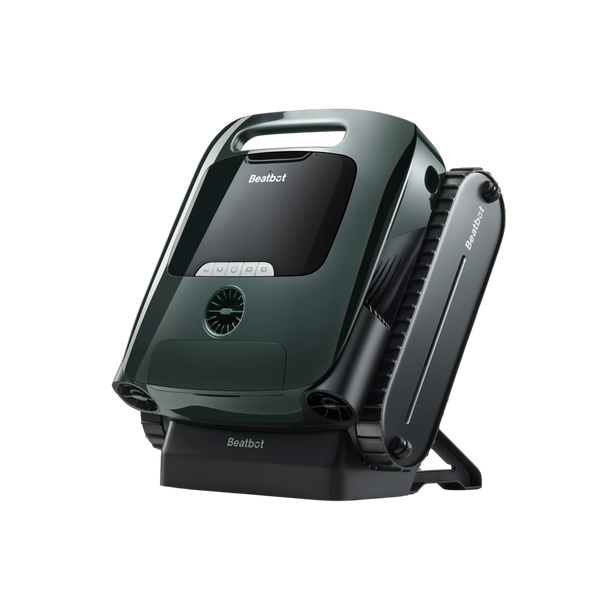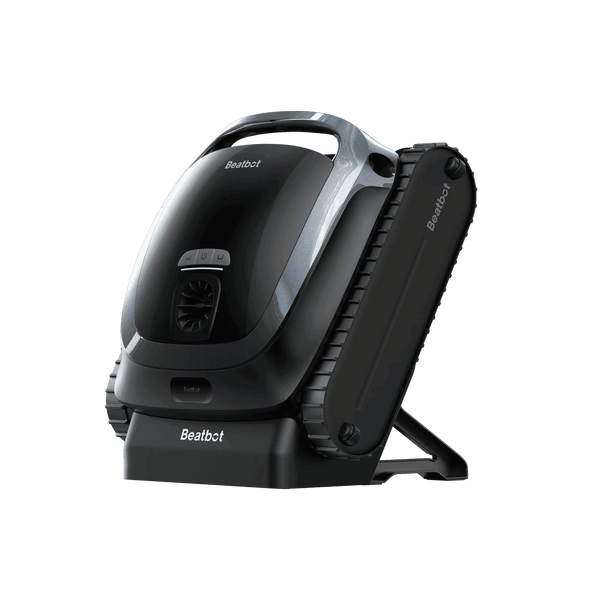Mastering Shock Timing for Safe Swimming and Pump Operations
Pool shock might sound like a hassle and a bit like a chemistry experiment, but it's essentially a process of super-chlorination that involves adding chlorine and non-chlorine chemicals to increase the level of free chlorine, thereby eliminating algae and bacteria. Pool shock is generally required during the pool season opening and peak usage periods. Clear and safe water quality is of utmost importance to swimmers, and while pool shock isn't as troublesome as it seems, there are many considerations to keep in mind. This blog provides the information you need to know about pool shock timing and when it's safe to swim.
Table of contents

The Importance of Pool Shock
Daily chlorination and weekly shock treatments are crucial for maintaining water safety and preventing the spread of diseases. The primary goal of pool disinfection is to ensure that the water is free from harmful microorganisms such as bacteria, viruses, and fungi, which can cause skin infections and gastrointestinal diseases. Regular shock disinfection also removes organic matter and chemical contaminants from sweat, urine, and chemical reactions, preventing the water from becoming cloudy and malodorous, as well as causing irritation to swimmers' eyes and skin by breaking down inorganic chloramines.
Factors Affecting Wait Time After Pool Shock
The specific wait time before swimming after pool shock may vary due to several factors:
Type and Concentration of Shock Treatment Agents
As we've mentioned earlier, pool shock involves using chlorine or non-chlorine chemicals to super-chlorinate and increase free chlorine levels to eliminate algae and bacteria. Most shock treatments on the market are either chlorine shock chemicals containing calcium hypochlorite or dichlor, and non-chlorine shock chemicals containing potassium monopersulfate. Non-chlorine pool shocks have a significant advantage in that you can almost immediately swim after using them without having to wait for hours!The different shock agents, due to their varying compositions, have different activities and concentrations, which directly affect the speed at which the product mixes with water and the chlorine levels return to a safe range for swimming.
Pool Size and Circulation System Efficiency
The size of the pool directly affects the time required for the shock treatment to disperse and stabilize chlorine levels. If your pool is larger, it will take longer for the shock treatment to fully integrate and disperse throughout the pool. The efficiency of the pool circulation system, such as the filter, is also crucial as it determines the speed of water circulation and the even distribution of the shock treatment.
Climate and Environmental Conditions
Climatic conditions, including temperature, humidity, and solar radiation intensity, significantly affect the chemical stability of pool water and the volatility of disinfectants. For instance, high temperatures can accelerate the evaporation of disinfectants, while humidity can affect the activity of chlorine.
Initial Water Quality Conditions
If your pool water is heavily polluted, extremely turbid, full of algae, or chemically unbalanced, shock treatment may require more time to restore water clarity and safety.
Choosing the Right Pool Shock for Your Needs
When faced with various pool water issues, selecting the right type of shock treatment is crucial for effective maintenance. Here’s a breakdown of what to use and when.
Chlorine-Based Shocks
For tackling major water problems, such as substantial algae growth or heavy contamination, a chlorine-based shock is your go-to solution. Options like calcium hypochlorite (cal-hypo) and dichlor are highly effective due to their potent concentration of chlorine. They work by aggressively eliminating contaminants, ensuring your water stays clear and clean. However, keep in mind that these shocks will elevate chlorine levels significantly, making the pool unsafe for swimming until the levels normalize.
Ideal for:
- Severe algae blooms
- High levels of contamination
Non-Chlorine Shocks
If regular maintenance is what you’re after, or if you need a quick boost to your sanitizer levels, consider a non-chlorine shock. Often referred to as oxidizers, these options allow you to swim sooner, as they don’t rely on increasing chlorine content. Non-chlorine shocks are effective at maintaining overall water balance, although they're not the best choice for handling severe infestations or issues.
Ideal for:
- Routine maintenance
- Quick water refresh
- Situations where immediate swimming access is desired
By understanding the specific issues your pool is facing and selecting the appropriate shock treatment, you ensure both the longevity of your pool and the safety of its swimmers.

Recommended Wait Time After Shock Treatment
While the specific wait time may vary, the general guideline for superchlorination is to wait at least 24 to 48 hours before swimming, including at least 10 hours of pump operation to allow the shock to fully integrate with the water. This allows enough time for the shock treatment to disperse, thoroughly disinfect the pool water, and stabilize the chlorine levels within the ideal range of 1-4 ppm.
However, non-chlorine oxidizing shock treatments differ, as you typically only need to wait about 15 minutes before resuming swimming. Therefore, always follow the instructions on the product label, as different products may have specific recommendations for wait times.
To ensure safety, it is crucial to monitor the chemical levels of your pool. After using a chlorine-based shock, the free chlorine levels should drop to 5 ppm or less before it is safe to swim. Additionally, check that the pH levels are at or below 7.6. Retesting the water after the initial shock treatment is advised to confirm these levels.
By understanding pool shock timing and following these guidelines, you can ensure your pool is safe and ready for enjoyment under the sun. Always prioritize safety by adhering to the manufacturer's directions and using a reliable pool testing kit to verify chemical levels before diving in.
When is the Best Time to Shock Your Pool?
Shocking your pool is an essential maintenance step that ensures clear and healthy water. The best times to shock your pool include:
After Heavy Pool Use: If you’ve hosted a gathering or a pool party, it's likely that sweat, lotions, and other contaminants have entered the water. Shocking helps restore the chemical balance.
Following Heavy Rain: Rain can dilute your pool chemistry, potentially introducing pollutants and organic debris. Shocking helps mitigate these effects and return your water to optimal conditions.
Visible Algae Growth: If you notice algae starting to bloom, reacting promptly by shocking your pool can be more effective than using algaecides. This method addresses the root problem swiftly.
Unpleasant Odors or Cloudy Water: A strong chlorine smell or murky water indicates a buildup of chloramines and organic material. Shocking eliminates these compounds and freshens the water.
Regular Maintenance: Even without visible issues, shocking your pool every week or two during swimming season keeps your water consistently clean and inviting.
Each of these scenarios offers a key opportunity to shock your pool, ensuring that it remains a safe and enjoyable feature of your home.
Why Might the Pool Water Become Cloudy After Shocking?
Shocking your pool is essential for maintaining crystal-clear water, but it can sometimes lead to temporary cloudiness. Here's why this happens and how you can handle it:
Dead Algae and Contaminants : When you shock a pool, the high chlorine levels kill algae and bacteria. These dead particles then become suspended in the water, causing it to look cloudy.
Chemical Imbalance : Pool chemicals must be balanced for optimal clarity. Shocking can slightly alter the pH and alkalinity levels, contributing to a hazy appearance. Regularly test your pool water to ensure everything is in check.
Reaction with Hard Water : Pools with hard water might respond to shock treatment by forming calcium precipitates. This can create a milky effect that appears as cloudiness.
Clearing Cloudy Pool Water
To restore that perfect sparkle, consider these steps:
Use a Pool Clarifier : Clarifiers help gather tiny particles, making it easier for your filtration system to remove them.
Apply a Flocculant : Flocculants bind these particles together, causing them to sink so they can be easily vacuumed out.
Monitor Filtration : Ensure your pool filter is running efficiently, as it's key in removing the suspended debris.
By understanding these factors and applying the right solutions, your pool will return to its clear, inviting state in no time.
FAQ: Pool Shock Common Questions

Q1: How often should I shock my pool?
A1: The frequency of shocking your pool depends on various factors, including usage, weather, and bather load. Generally, it's recommended to shock your pool once a week during the peak swimming season. However, after heavy use, following rain, or if you notice cloudy water or a strong chlorine odor, it's a good idea to shock the pool to ensure water safety and clarity.
Q2: Can I swim immediately after shocking my pool?
A2: No, it's not safe to swim immediately after shocking your pool. The typical waiting period is 24 to 48 hours after superchlorination to allow the chlorine to effectively kill bacteria and algae and to reduce the chlorine level to a safe range (1-4 ppm) for swimming. For non-chlorine shocks, the wait time is significantly shorter, usually about 15 minutes.
Swimming in a pool that has just been shocked poses significant health risks. High concentrations of chlorine, whether from bleach, liquid chlorine, or another chlorine-based shock, can cause skin and eye irritation due to their highly corrosive nature. Additionally, if pool water containing these elevated chlorine levels is accidentally swallowed, it can lead to serious health issues, necessitating immediate medical attention.
To ensure a safe swimming environment, always check chlorine levels after shocking and wait until they drop to the recommended range. This protects against potential damage and ensures a pleasant swim. Remember, safety first!
Q3: Do I need to run my pool pump during and after shock?
A3: Yes, it is necessary. Running the pump helps circulate the shock treatment throughout the pool, ensuring even distribution and effectiveness. It's recommended to run the pool pump for at least 10 hours after shocking to help integrate the shock with the water. Continuous circulation also aids in maintaining the chlorine levels within the desired range and clearing any combined chlorine (chloramines).
To ensure your pool remains clear and healthy, it's important to run your pool pump and filter for an appropriate amount of time after shocking. Generally, you should run them for at least 8 hours to allow the filter to clean the water effectively. This period helps the pump circulate the chemicals thoroughly throughout the pool.
However, if you're dealing with algae, it's advisable to plan for a longer filtration period—ideally up to 24 hours . This extended time helps ensure that the algae are properly treated, reducing the risk of recurrence.
By adjusting the run time of your pool pump and filter based on your pool's specific needs, you can maintain optimal water quality and clarity.
Relative Blogs
About the author



















